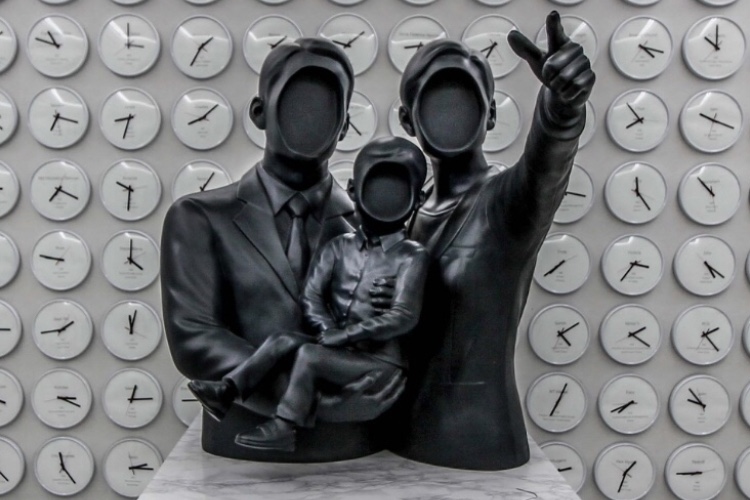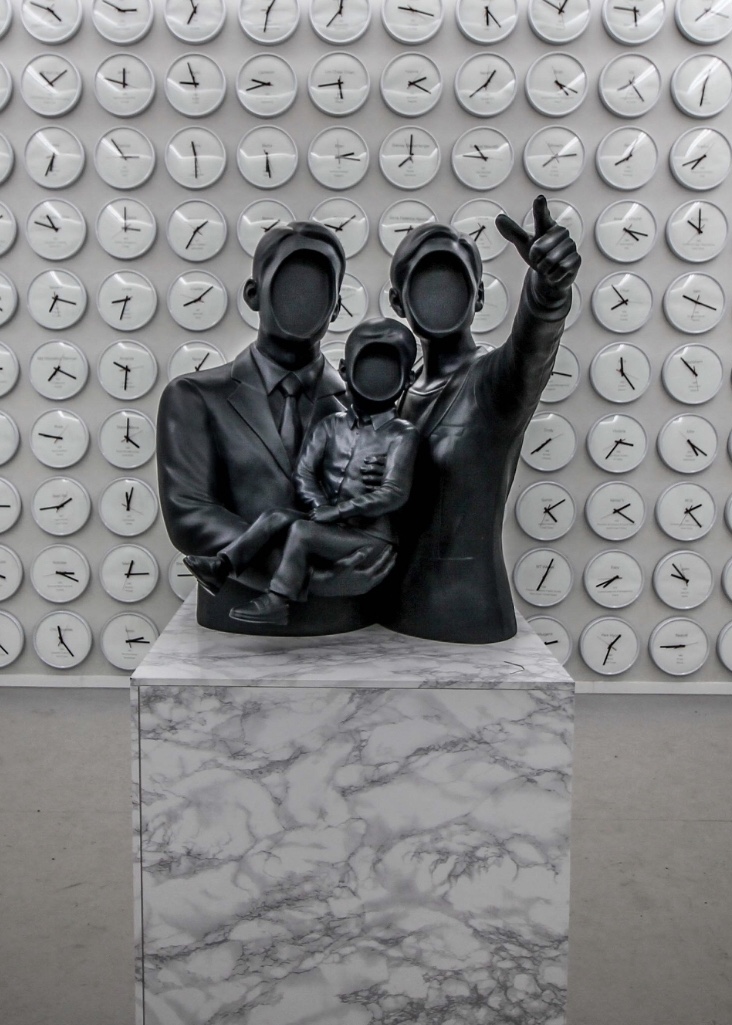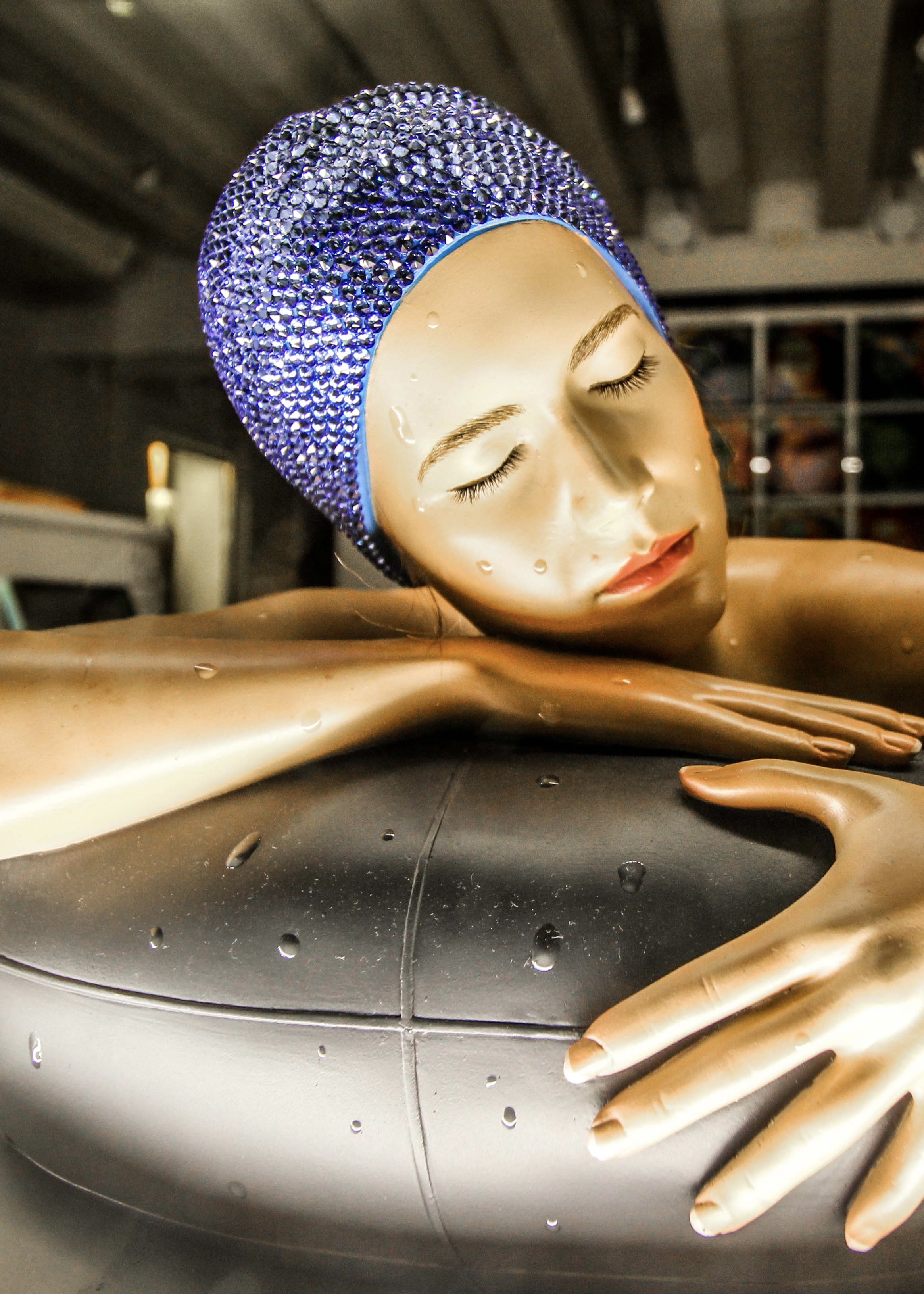
Lee Wan: An Artist Between Individuality and Collectivity
Lee Wan, born in 1979 in Seoul, is an artist who continually explores the boundaries between the individual and society with his works. His installations and performances are imbued with social critique, questioning the power structures that shape our lives. Throughout his artistic career, he has deeply engaged with themes such as labor, time, and human worth. His work "Proper Time" is a striking example of this engagement, poignantly illustrating how our living conditions are influenced by global inequalities.
He began his artistic career in South Korea before gaining international recognition. His early works were heavily influenced by the political and social realities of his home country. Through his travels and encounters with people from various cultures, he broadened his perspective and developed a deeper exploration of universal human themes. In "Proper Time," he consolidates these experiences into a powerful installation that is both individually and collectively impactful.
The installation "Proper Time" consists of 668 identical wall clocks densely covering the walls of a white room. Each clock bears the name, birth date, nationality, and occupation of a person Lee Wan met and interviewed during his travels. However, these clocks do not tick uniformly; each one moves at a different rate, determined by the time it takes the respective individual to earn a meal. This creates a moving and simultaneously unsettling portrait of global inequalities.
Entering the room through a narrow door, visitors must stoop, a symbolic gesture of submission to what awaits inside. The room itself is bathed in neutral white light, creating a calming atmosphere. The absence of ticking sounds and the pleasant background noise of people discussing their work and roles add to the meditative ambiance.
In the center of the room stands a dark statue titled "For a Better Tomorrow." The sculpture depicts a family – father, mother, and child – united in an idealized pose reminiscent of socialist monuments. However, the faces of the figures are cut out, rendering them faceless and anonymous. This abstraction raises the question of whether, in today's society, we are defined solely by our roles and time, and whether we have lost our true identity as a result.
The sculpture "For a Better Tomorrow" is a clear reference to propagandistic depictions of idealized families from various political regimes, whether North Korea, Nazi Germany, or the United States during World War II. These images always depict a perfect, homogeneous unit, instrumentalized for the state's ideological purposes. Lee Wan critically engages with this tradition, showing how political systems turn individuals into faceless tools, serving only to embody an ideological message.
Through "Proper Time," Lee Wan succeeds in portraying the invisibility and anonymity of the individual in a globalized world, where economic inequalities shape individual existence. Each clock represents a unique story, an individual reality shaped by economic constraints and social structures. At the same time, the totality of the clocks creates an overwhelming image of collective humanity, trapped in a system that often renders the individual invisible and insignificant.
Lee Wan’s "Proper Time" is more than just an artistic installation. It is a powerful social statement that encourages visitors to reflect on their own living conditions and those of others. It prompts us to reconsider the time we have and to question the structures that define our existence. Lee Wan shows us that although each of us is unique, we are all part of a larger whole – a history of individuals connected by global power structures and economic inequalities.
Highlight
Separated they live in Bookmarksgrove right at the coast of the Semantics, a large language ocean. A small river named Duden flows by their place and supplies it with the necessary regelialia
“She packed her seven versalia, put her initial into the belt and made herself on the way. When she reached the first hills of the Italic Mountains, she had a last view back on the skyline of her hometown Bookmarksgrove ” — Jean Smith

Lee Wan, born in 1979 in Seoul, is an artist who continually explores the boundaries between the individual and society with his works. His installations and performances are imbued with social critique, questioning the power structures that shape our lives. Throughout his artistic career, he has deeply engaged with themes such as labor, time, and human worth. His work "Proper Time" is a striking example of this engagement, poignantly illustrating how our living conditions are influenced by global inequalities.
Lee Wan began his artistic career in South Korea before gaining international recognition. His early works were heavily influenced by the political and social realities of his home country. Through his travels and encounters with people from various cultures, he broadened his perspective and developed a deeper exploration of universal human themes. In "Proper Time," he consolidates these experiences into a powerful installation that is both individually and collectively impactful.
The installation "Proper Time" consists of 668 identical wall clocks densely covering the walls of a white room. Each clock bears the name, birth date, nationality, and occupation of a person Lee Wan met and interviewed during his travels. However, these clocks do not tick uniformly; each one moves at a different rate, determined by the time it takes the respective individual to earn a meal. This creates a moving and simultaneously unsettling portrait of global inequalities.
Entering the room through a narrow door, visitors must stoop, a symbolic gesture of submission to what awaits inside. The room itself is bathed in neutral white light, creating a calming atmosphere. The absence of ticking sounds and the pleasant background noise of people discussing their work and roles add to the meditative ambiance.
In the center of the room stands a dark statue titled "For a Better Tomorrow." The sculpture depicts a family – father, mother, and child – united in an idealized pose reminiscent of socialist monuments. However, the faces of the figures are cut out, rendering them faceless and anonymous. This abstraction raises the question of whether, in today's society, we are defined solely by our roles and time, and whether we have lost our true identity as a result.
The sculpture "For a Better Tomorrow" is a clear reference to propagandistic depictions of idealized families from various political regimes, whether North Korea, Nazi Germany, or the United States during World War II. These images always depict a perfect, homogeneous unit, instrumentalized for the state's ideological purposes. Lee Wan critically engages with this tradition, showing how political systems turn individuals into faceless tools, serving only to embody an ideological message.
Through "Proper Time," Lee Wan succeeds in portraying the invisibility and anonymity of the individual in a globalized world, where economic inequalities shape individual existence. Each clock represents a unique story, an individual reality shaped by economic constraints and social structures. At the same time, the totality of the clocks creates an overwhelming image of collective humanity, trapped in a system that often renders the individual invisible and insignificant.
Lee Wan’s "Proper Time" is more than just an artistic installation. It is a powerful social statement that encourages visitors to reflect on their own living conditions and those of others. It prompts us to reconsider the time we have and to question the structures that define our existence. Lee Wan shows us that although each of us is unique, we are all part of a larger whole – a history of individuals connected by global power structures and economic inequalities.

Even the all-powerful Pointing has no control about the blind texts it is an almost unorthographic life One day however a small line of blind text by the name of Lorem Ipsum decided to leave for the far World of Grammar. The Big Oxmox advised her not to do so, because there were thousands of bad Commas, wild Question Marks and devious Semikoli, but the Little Blind Text didn’t listen.
She packed her seven versalia, put her initial into the belt and made herself on the way. When she reached the first hills of the Italic Mountains, she had a last view back on the skyline of her hometown Bookmarksgrove, the headline of Alphabet Village and the subline of her own road, the Line Lane. Pityful a rethoric question ran over her cheek, then she continued her way.
Far far away, behind the word mountains, far from the countries Vokalia and Consonantia, there live the blind texts. Separated they live in Bookmarksgrove right at the coast of the Semantics, a large language ocean. A small river named Duden flows by their place and supplies it with the necessary regelialia. It is a paradisematic country, in which roasted parts of sentences fly into your mouth.
Pointing has no control about the blind texts
Far far away, behind the word mountains, far from the countries Vokalia and Consonantia, there live the blind texts. Separated they live in Bookmarksgrove right at the coast of the Semantics, a large language ocean. A small river named Duden flows by their place and supplies it with the necessary regelialia. It is a paradisematic country, in which roasted parts of sentences fly into your mouth.
She packed her seven versalia, put her initial into the belt and made herself on the way. When she reached the first hills of the Italic Mountains, she had a last view back on the skyline of her hometown Bookmarksgrove, the headline of Alphabet Village and the subline of her own road, the Line Lane. Pityful a rethoric question ran over her cheek, then she continued her way.



Pointing has no control about the blind texts
Far far away, behind the word mountains, far from the countries Vokalia and Consonantia, there live the blind texts. Separated they live in Bookmarksgrove right at the coast of the Semantics, a large language ocean. A small river named Duden flows by their place and supplies it with the necessary regelialia. It is a paradisematic country, in which roasted parts of sentences fly into your mouth.
She packed her seven versalia, put her initial into the belt and made herself on the way. When she reached the first hills of the Italic Mountains, she had a last view back on the skyline of her hometown Bookmarksgrove, the headline of Alphabet Village and the subline of her own road, the Line Lane. Pityful a rethoric question ran over her cheek, then she continued her way.

